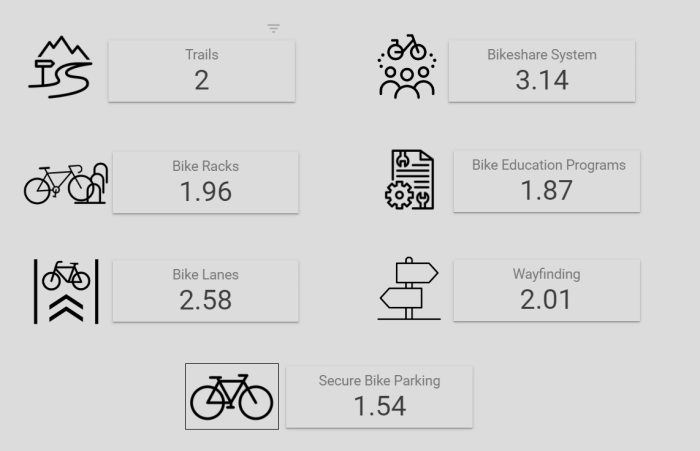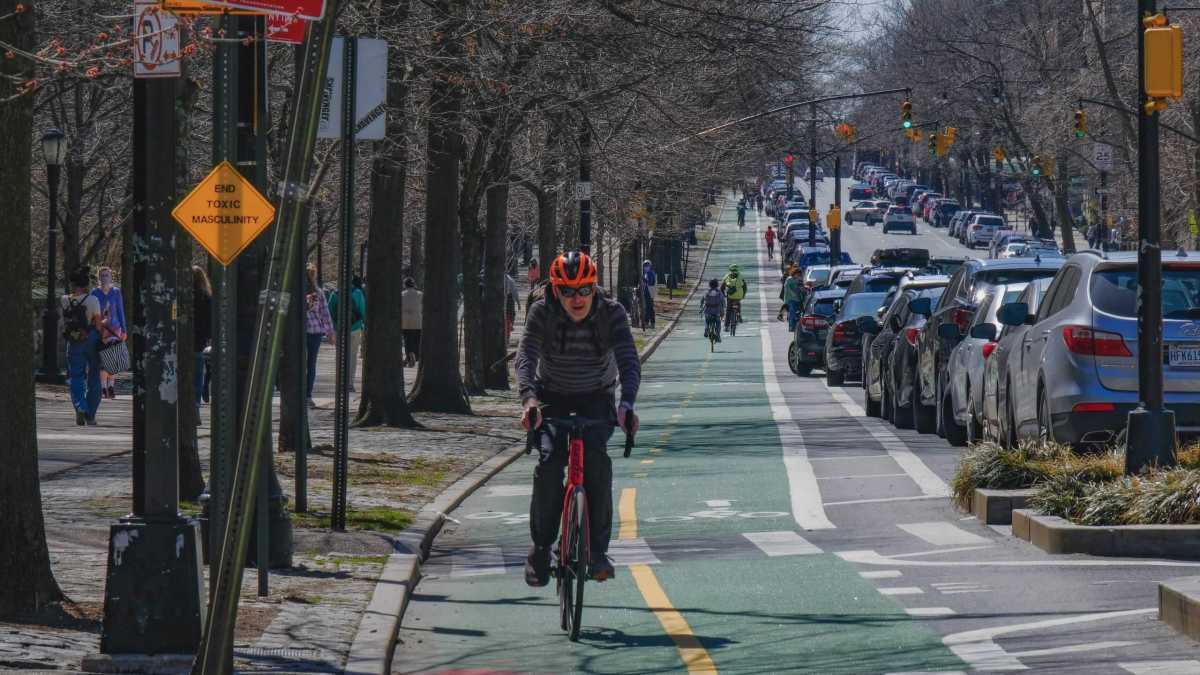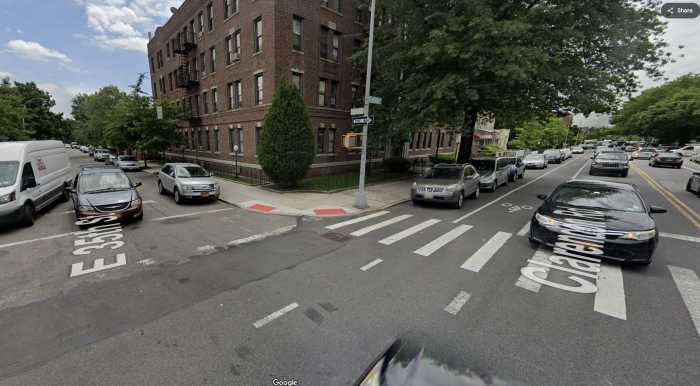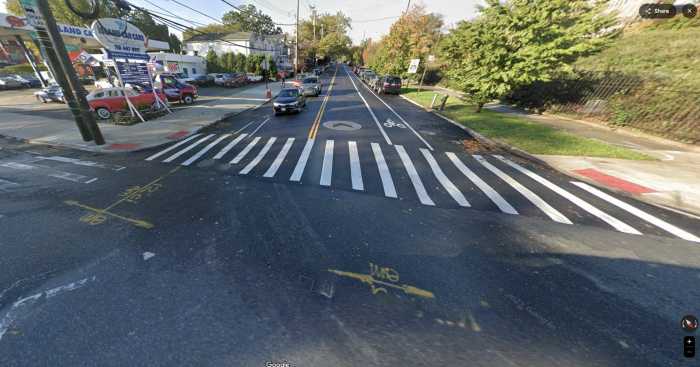The city’s bicycling infrastructure has plenty of room for improvement, according to thousands of cyclists who responded to the first-ever New York Cycling Census.
None of the categories that responding cyclists were asked to rate yielded more than 3.2 stars out of five on average, with several seeing ratings below 2 stars. New Yorkers gave the city’s bikeshare infrastructure, mainly but not limited to CitiBike, an ambivalent 3.14 stars on average, while on the lower end, the city’s secure bike parking ratings came in at a dismal 1.54 stars.
Those from the five boroughs rated the city’s bike lanes in the F range, at 2.58 stars on average, while bike racks were rated even lower at 1.96 stars.
Even so, the Big Apple’s bike infrastructure earned higher marks than the rest of the state in all categories except for dedicated bike trails.
The census, administered by consulting firm Urban Cycling Solutions and CUNY’s University Transportation Research Center, and funded by the New York State Energy Research & Development Authority (NYSERDA), got responses from over 13,700 New Yorkers in all 62 of the state’s counties, with the highest number of responses coming from Brooklyn, Manhattan, and Queens.

Overall, New Yorkers say the biggest “barrier” to biking is the scarcity of bike lanes and/or safe bike routes, with 25.9% of respondents saying the lack of such infrastructure keeps them off two wheels. Weather, fear of conflict with cars, and the lack of secure bike parking are also significant barriers according to the survey.
Those fears are only reinforced by the ever-increasing body count of cyclists on city streets this year. Nine cyclists died while traversing the five boroughs in the first three months of 2023, the largest number since the city adopted Vision Zero as a policy goal in 2014, according to advocacy group Transportation Alternatives. Overall, 70 people have died in traffic collisions in New York as of April 30 this year, a 6% increase over the same time last year, according to NYPD data.
“The results should surprise no one with the body count we’re seeing this year already for cyclist fatalities,” said Jon Orcutt, advocacy director at Bike New York and a former city transportation official, who helped peer-review the survey data.
The reasons New Yorkers choose to bike include getting exercise, mental health and wellness, shortened commutes, reduced carbon footprints, cost-effectiveness, and good old-fashioned fun.
The Adams Administration has made it a public policy priority to get as many people out of cars and onto bikes or public transit as possible amid a pandemic-era spike in auto ownership in the Big Apple. But most of the city’s bike lanes remain unprotected and vulnerable to motor vehicle traffic, and the administration failed to build a legally-mandated 30 miles of new protected bike lanes last year.
“Even when the bike lanes are beautiful and well-designed, exactly what you want, there’s cars and trucks in them all the time,” Orcutt noted.
Bike infrastructure is also most concentrated in whiter, wealthier areas of the city, highlighting a shortcoming of the study and the cycling advocacy community writ large: nearly 80% of the census respondents were white, 60% were male, and 43% make over $100,000 annually.

The city’s Department of Transportation claims it is on track to build a record number of miles of protected bike lanes this year. Last month, Mayor Eric Adams proposed in his PlaNYC sustainability report to build “thousands” of new secure bike parking spots starting in 2025, aiming to deter the widespread and under-reported issue of bike theft.
“New York City is leading the state and nation in implementing safe bike infrastructure, with DOT installing record numbers of bicycle lanes and racks in recent years as ridership reached historic highs,” said DOT spokesperson Vin Barone in a statement. “Last year we recorded more cyclists than ever over our East River bridges and in Midtown, Manhattan, and we’re committed to fostering that growth with new education initiatives, innovative street redesigns, and improved parking access.”
Based on input from survey-takers, the report delineates numerous “opportunities” for the city and state to improve the cycling experience. Those include better integration between cycling with transit; the MTA announced earlier this year it would implement a strategic plan to implement bike parking at its station facilities. Respondents also want decision-makers to promote e-bikes and subsidize their purchase.
Comprehensive bike education is also lacking according to the survey respondents: New York could do better on educating drivers about sharing the road with cyclists, the survey concludes, and training on bike maintenance can be more “institutionalized” with broader appeal to women and children.
Read more: NJ reps oppose NYC congestion pricing plan





































